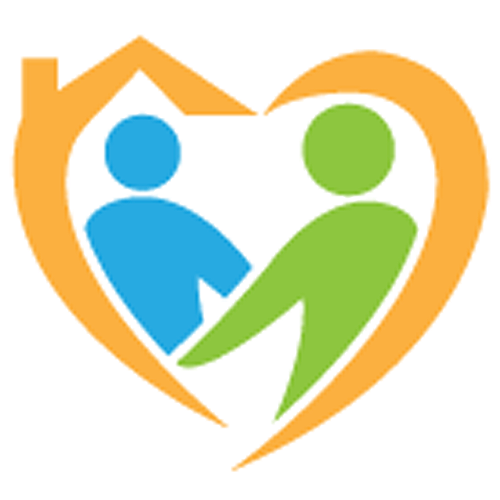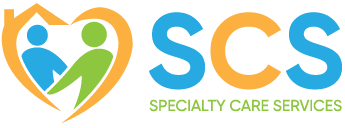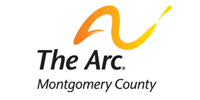Stroke In-Home Nursing and Post-Rehabilitation Care
Maryland, Washington DC, and Northern Virginia
24/7 Nurse Availability
Free In-Home Assessments
Over 25 Years of Experience
Hours:
Request Call Back
Hero Request Form
Thank you for contacting us.
We will get back to you as soon as possible.
Please try again later.
Comprehensive Stroke Recovery Home Care Services
We provide skilled Stroke In-Home Nursing and Post-Rehab Care to stroke survivors to help them recover safely and quickly at home! When a loved one returns home after a severe stroke, families often find that therapy alone isn’t enough. Daily life is different now, with mobility, meals, medications, personal care, and the home environment all needing care and support.
Our Stroke Home Nursing and Care Program fills that gap, bringing trained nurses and caregivers into the home so your family member can live more safely and comfortably while continuing to make progress with their recovery.
Who We Serve
We’re built for families whose loved one has had a higher-severity stroke [1] and needs hands-on help at home after the hospital or inpatient rehab. These often include:
- Older adults or seniors who are not fully recovered after rehab
- People with limited mobility, one-sided weakness, swallowing difficulty, breathing difficulty, or cognitive changes
- Individuals who cannot safely perform normal daily activities (walking, bathing, dressing, grooming), or who need cueing and supervision throughout the day
- Stroke victims prone to readmissions in the hospital.
How Common Is In-Home Care for Stroke Patients?
- One study found that, after a hospital visit for a stroke, ~11.5% of stroke patients were discharged home with home health, 19.5% to Skilled Nursing Facilities (similar to the treatments offered by Specialty Care Services). This means 31% of patients discharged from stroke are often recommended our home care program. [2]
- Another AHA analysis estimates ~1 in 8 to 1 in 5 patients leave with nurse-led home health services [3]
How We Provide Care
We personalize our care for your loved one based on their medical history, neurologic deficits, progress of recovery, and lifestyle. Your loved one’s care may include:
1) Daily Living and Safety
- Activities of Daily Living support: Bathing, dressing, grooming, hygiene, toileting, incontinence care, safe feeding, and meal prep when needed
- Mobility and transfers: Bed transfers, bathroom transfers, car transfers, and supervised ambulation with gait belts/walkers
- Fall-prevention: We can help restructure the house to reduce fall risk with grab bars, commodes, lighting, clutter reduction, and adaptive equipment recommendations. We also provide support with all aspects of movement, leading to more stability and lower fall risk.
- Supervision and cueing: For memory/attention issues and executive function challenges
2) Medication and Health Management
- Medication administration/reminders
- Vitals monitoring: Regular blood-pressure checks and logs, heart rate, weight, and glucose tracking where appropriate
- Risk coaching: Practical routines for sodium moderation, movement goals, and adherence—aligned with CDC guidance on stroke risk factors (BP, cholesterol, diabetes). [4]
3) Specialized Nursing
- Wound and Injury care: Pressure-injury prevention, turning schedules, heels/elbows protection
- Spasticity management: Splints, gentle ROM, positioning, and PT/OT/Speech therapy coordination
- Dysphagia support: Safe feeding, diet textures, aspiration prevention strategies, and tube-feeding care if applicable
- Bladder/bowel care: Catheters, briefs, bowel regimens, and hydration schedules
4) Cognitive, Communication & Emotional Support
- Practical compensations: Orientation boards, routines, cue cards, caregiver coaching for aphasia-friendly communication
- Mood and behavior: Companionship, structured days, and support to reduce anxiety/frustration common after stroke
- Family training: We teach safe transfers, communication techniques, de-escalation, and how to watch for stroke recurrence signs to family members and loved ones
5) Care Coordination and Appointments
- Scheduling and reminders for neurology, cardiology, primary care, and therapy
- Appointment escort: Driving and attending medical appointments with stroke patients
- Provider communication: We keep your clinicians updated with medical documentation, progress, and concerns
- DME and supplies: Help obtaining walkers, commodes, shower benches, hospital beds, and incontinence supplies
- Insurance navigation: Explaining home health after stroke vs. private duty options so families can plan confidently
Important note: We do not provide PT/OT/Speech Therapy directly. Instead, we coordinate closely with your therapists and physicians and deliver everything during and beyond therapy sessions to keep your loved one healthier and more comfortable at home.
What Areas We Serve — And Why
We provide in-home stroke care to Montgomery County MD, Prince George’s County MD, Howard County MD, Frederick County MD, Washington DC, Fairfax County VA, and Arlington County VA. We focus on these areas because they contain strong stroke systems but also have clear needs that home-based post-rehab care can address.
Estimated Number of Stroke Victims per County:
Reviews

Related Services
| Counties/Jurisdictions | Total population (2023) | Estimated adults with a prior stroke | Estimated with severe stroke [15] |
|---|---|---|---|
| Montgomery County MD | 1,058,474 [5] | 22,940 [12] | 1,900 |
| Prince George’s County MD | 947,430 [6] | 20,740 | 1,720 |
| Howard County MD | 336,001 [7] | 7,200 | 600 |
| Frederick County MD | 293,391 [8] | 6,290 | 520 |
| Washington, DC | 678,972 [9] | 17,660 | 1,470 |
| Fairfax County VA | 1,141,878 [10] | 22,100 [13] [14] | 1,830 |
| Arlington County VA | 234,162 [11] | 4,800 | 400 |
In the areas that we serve, 101,730 adults will likely experience a stroke in their lifetime, and of those, 8,440 residents are estimated to experience a severe stroke for which we provide care.
We understand how widespread severe strokes are in the areas we serve, as well as the health and lifestyle needs of these stroke victims. That’s why Specialty Care Services specifically created our Stroke Home Nursing & Care Program to provide the needed home care to the thousands of individuals (and their families) who suffer from severe strokes.
Why Choose In-Home Care vs. Skilled Nursing Facilities (SNF)?
Many of our patients’ loved ones ask us what the major differences between these options for stroke patients are. Here’s why in-home stroke care is often recommended:
- Clinical appropriateness: If your loved one is medically stable but needs frequent RN/LPN check-ins, home health aide support, supervision, and coordination across providers.
- Stronger carryover: Practicing mobility, transfers, swallowing strategies, and communication in the real home often sticks better than in an institutional setting.
- Fewer disruptions: Home routines, familiar foods, and familiar voices reduce agitation, confusion, and hospital readmissions.
- Family involvement: We train your family and caregivers to spot red flags and use safe techniques, including bed-to-chair transfers, toileting, communication techniques, and basic caregiving instructions.
- Early Supported Discharge (ESD) programs with coordinated home-based rehab shorten hospital stays by about 5–6 days and improve independence vs. usual care. [16]
- System trend: For many conditions, home health is now the most frequently used post-acute care destination, displaying safety, patient preference, and system efficiency. [17]
- Time-sensitive care: In 2023, only 27% of people with stroke symptoms arrived at the local hospital in time for acute treatment—making caregiver training and home monitoring crucial to catch red flags early and give stroke victims the highest chance of survival and recovery. [18]
Bottom line: If your loved one can be safe at home with nursing oversight and daily caregiver support, home is often the most effective and comfortable place to recover.
Providers and Professionals We Partner With (and Recommend)
- Physicians and doctors, including neurologists, physiatrists, cardiologists, and primary care
- Therapy Teams such as PT/OT/Speech Therapy (we coordinate goals, reinforce exercises/strategies at home)
- DME suppliers for walkers, wheelchairs, commodes, splints, and hospital beds
- Other providers such as pharmacists, social workers, and local stroke support groups for whole-family support
- Local hospital stroke programs for smooth transitions, including Suburban Hospital, Adventist Shady Grove, Inova Fairfax, MedStar Washington/Georgetown, and GW Hospital so hospital care plans carry forward at home. [19] [20] [21] [22] [23]
How It Works - Step-by-Step
- RN Assessment (Day 1–2):
A Registered Nurse evaluates medical history, stroke history, NIHSS severity and current deficits, vitals, meds, swallowing risk, mobility, skin integrity, cognition/communication, home layout, and caregiver capacity. We review your hospital/rehab discharge plan and therapy notes. - Personalized Plan of Care:
We develop a customized care plan covering: health goals, caregiver schedule, safety priorities, med regimen, vitals tracking, fall-prevention actions, and provider follow-ups. We’ll also list which tasks require an RN/LPN and which require a home health aide. - Deliver At-Home Care:
Your nurse or care coordinator introduces the caregivers, sets up charts/logs, organizes meds, and installs simple safety upgrades. We schedule MD/therapy follow-ups and set reminders. - Daily Care & RN Oversight:
Caregivers support activities of daily living, mobility, meals, and supervision. RN check-ins (frequency based on need) review vitals, meds, skin, and any new symptoms. We update the plan based on our patient’s needs. - Provider Communication & Care-Plan Updates:
We keep your physicians and therapists in the loop, share vitals/symptoms, and request orders when needs change. We also teach families how to spot red-flag symptoms. - Progress Reviews:
Every few weeks, we revisit goals (fewer falls, better BP control, safer transfers, less caregiver burnout) and scale hours up/down to what our patients need.
How Stroke Home Care Patients Find Us
Many of our stroke patients find us by searching for these terms:
- Core: stroke home nursing, in-home stroke care, post-stroke home care, home nursing for stroke patients, stroke recovery care at home, stroke home health care, home health after stroke
- Needs and tasks: ADL support after stroke, fall-prevention after stroke, medication management after stroke, blood-pressure monitoring at home, spasticity management at home (splints, ROM), dysphagia/swallow therapy at home (coordinated), caregiver training for stroke
- Provider language: stroke home care agency, home health agency for stroke, in-home stroke nurse, home health aide for stroke survivors, RN/LPN stroke care at home, care coordinator for stroke (home-based)
- Transactional: hire a stroke home nurse, stroke home care near me, book post-stroke home care, 24/7 stroke care at home, cost of stroke home care/prices
If you’re searching for these, you’re in the right place.
Sources
- National Institute of Neurological Disorders and Stroke (NINDS).
https://www.ninds.nih.gov
Accessed August 2025. - National Library of Medicine – PubMed Central (PMC).
https://www.ncbi.nlm.nih.gov/pmc
Accessed August 2025. - BioMed Central – Stroke & Home Health Analysis.
https://www.biomedcentral.com
Accessed August 2025. - American Medical Association. Stroke risk factors and prevention guidance.
https://www.ama-assn.org
Accessed August 2025. - U.S. Census Bureau. County and city population estimates, 2023.
https://www.census.gov
Accessed August 2025. - Maryland Department of Health – Enterprise Agency Template.
https://health.maryland.gov
Accessed August 2025. - Live Healthy Fairfax (Fairfax County Government).
https://www.fairfaxcounty.gov/live-healthy
Accessed August 2025. - Nature – Severe stroke prevalence estimates.
https://www.nature.com
Accessed August 2025. - Cochrane Library. Early Supported Discharge programs after stroke.
https://www.cochranelibrary.com
Accessed August 2025. - Medicare Payment Advisory Commission (MedPAC).
https://www.medpac.gov
Accessed August 2025. - Frederick Health. Stroke education and treatment timing.
https://www.frederickhealth.org
Accessed August 2025. - Johns Hopkins Medicine – Stroke program.
https://www.hopkinsmedicine.org
Accessed August 2025. - Adventist HealthCare – Shady Grove Stroke Services.
https://www.adventisthealthcare.com
Accessed August 2025. - Inova Health System – Stroke care newsroom.
https://www.inova.org
Accessed August 2025. - MedStar Health – Washington Hospital/Georgetown Stroke Center.
https://www.medstarhealth.org
Accessed August 2025. - George Washington University Hospital – Stroke services.
https://www.gwhospital.com
Accessed August 2025.
- Bullet text
- Bullet text
- Bullet text
- Bullet text
- Bullet text
- Bullet text
- Bullet text
- Bullet text
- Bullet text
- Bullet text
How quickly can stroke in-home nursing start after hospital or rehab discharge?
In-home nursing services can begin within 24 – 48 hours after our initial RN home assessment.Can you help patients use local waiver programs (MD Community First Choice or Home & Community-Based Options, DC EPD Waiver, VA CCC Plus) to pay for stroke care at home?
Yes, we can direct our patients to the proper intake departments for a variety of home care programs through the greater Washington metropolitan area.Is 24/7 or live-in stroke care available?
Yes, we offer 24/7 aide care for our stroke patients. However, we do not offer Live-in care.What is your minimum visit length and weekly hour minimum for stroke home care?
Our minimum visit length is four hours on weekdays and six hours on weekends. Our services are tailored based on our patient's needs. We can offer as little as one shift per week, if it’s determined that’s all that’s needed.Do you offer short-term respite coverage so family caregivers can take breaks?
Yes, we offer short-term respite coverage in the home setting.Do you support younger stroke survivors (<65) with return-to-work or school planning and scheduling?
Yes, we do provide in-home care support for stroke patients (<65).Do you have bilingual/multilingual caregivers?
Yes, we do have many bilingual and multilingual caregivers on staff. We feel that it’s important that our patients can clearly communicate with our staff, so having an aide who speaks the same language as our patient is very helpful.

CP #1 Headline
CP #1 Body
CP #1 CTA Lead-in
Not valid with any other offers or promotions. Restrictions apply.
Must mention this coupon at the time of scheduling.


